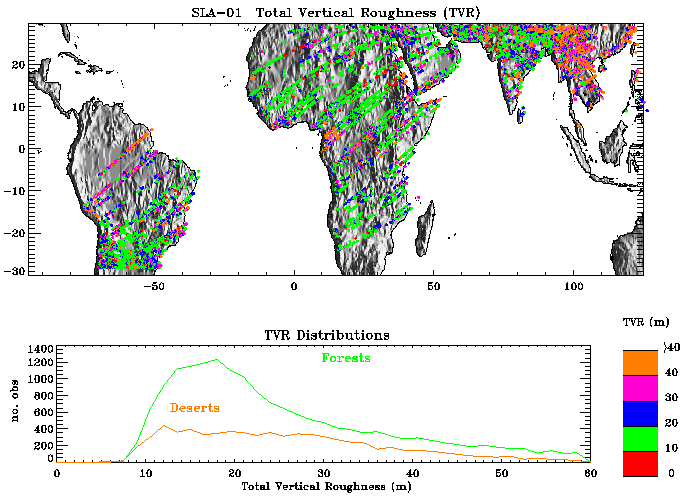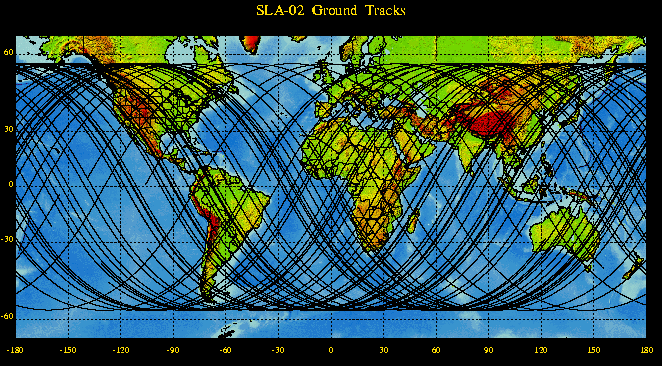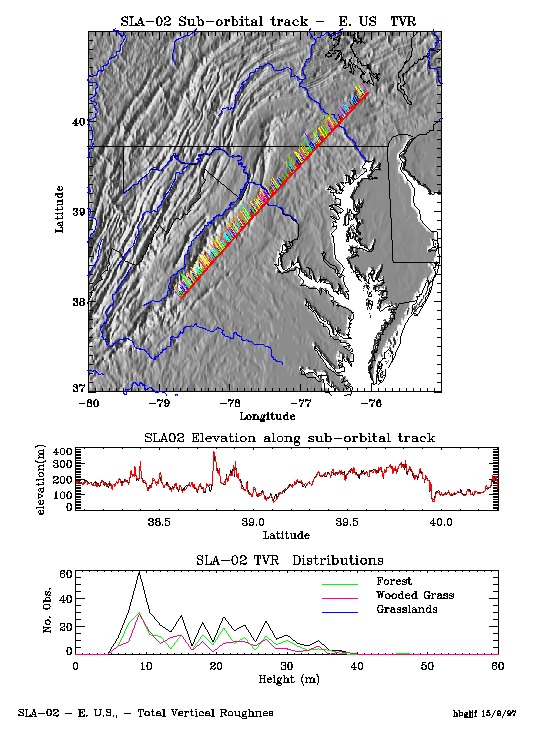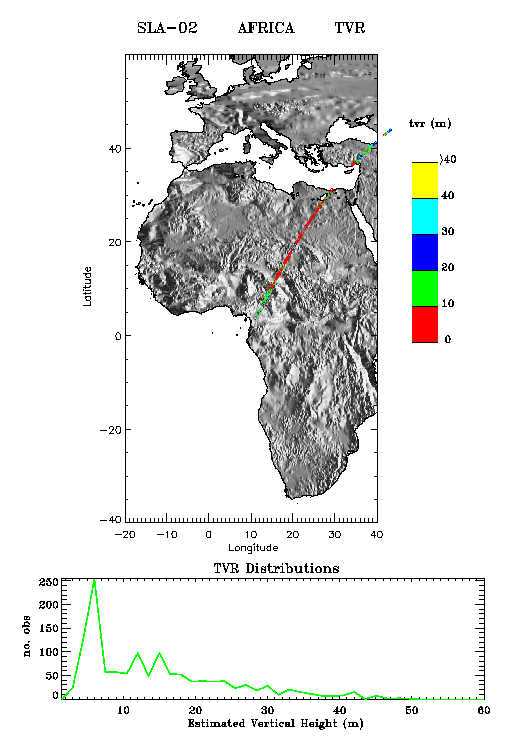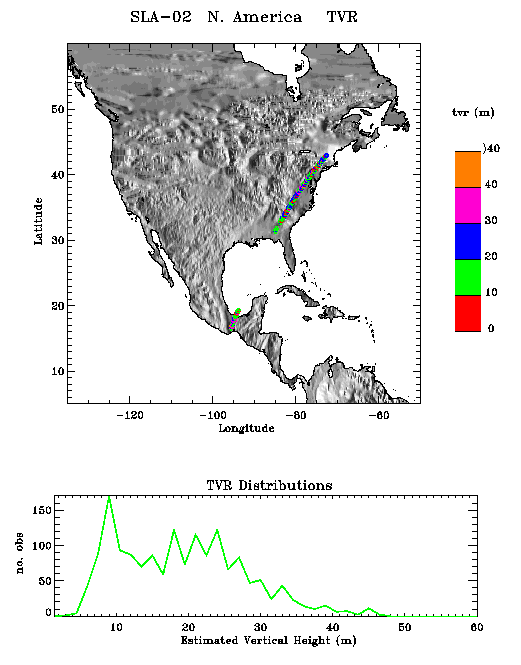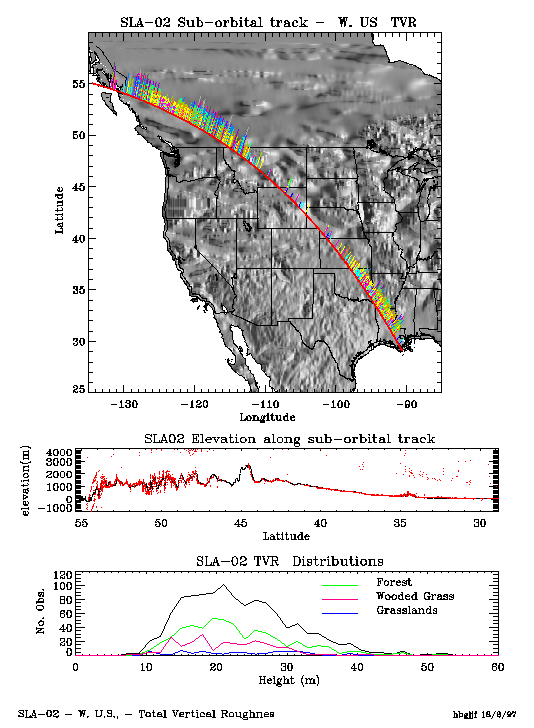Example of an SLA-02 transect across the headwaters of the
Amazon (western Amazon basin), showing the variability of
landcover classes and the heights of vegetation (as total
vertical roughness or TVR within each 100 m diameter footprint
generated by SLA-02). Histograms of the TVR (which is a
measure of canopy assemblage height in cases where local
slopes are low) are also plotted.

In summary, the variable gain amplifier (VGA) that was
implemented on SLA-02 has circumvented the waveform saturation
issue that we faced with our SLA-01 experiment (Jan. 1996
on STS-72).

Stay tuned for further quick-look science examples, courtesy
the SLA-02 science team and the outstanding visualization
tools and talents of Jim Frawley (SLA-02 science team
member).

Back to LAPF home
Responsible NASA officials: James Garvin, David Harding
Web Curator: Jim Roark (SSAI)
Email roark@denali.gsfc.nasa.gov with comments or suggestions
Last modified November 14, 1997



